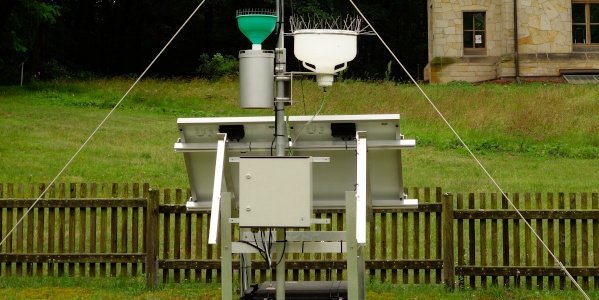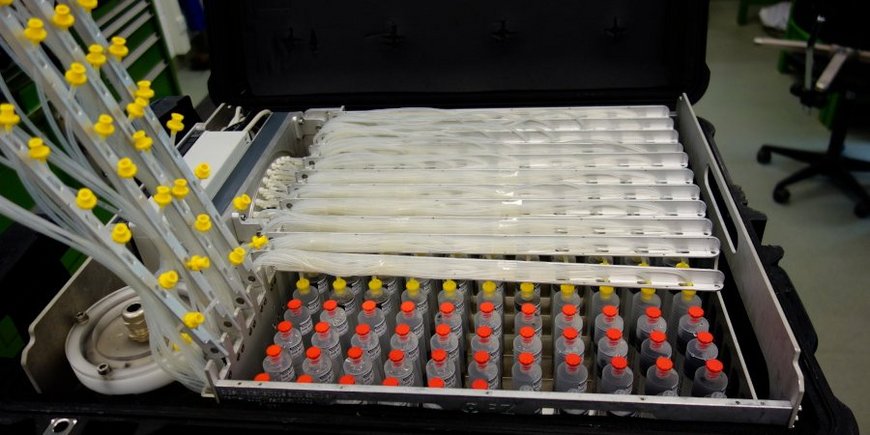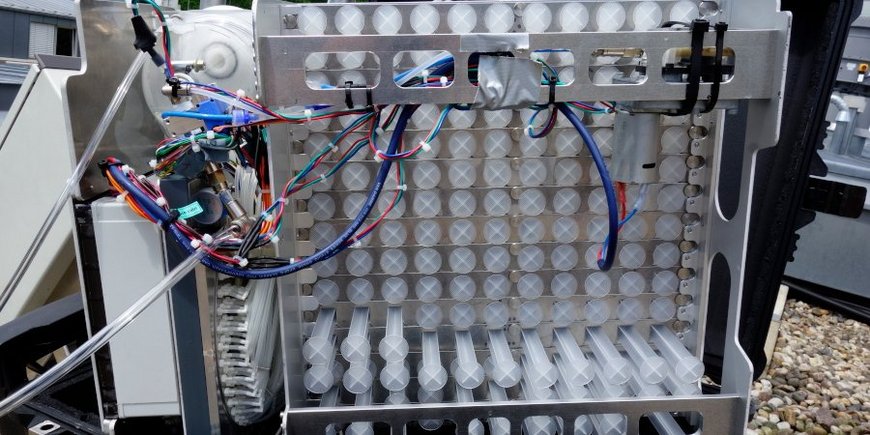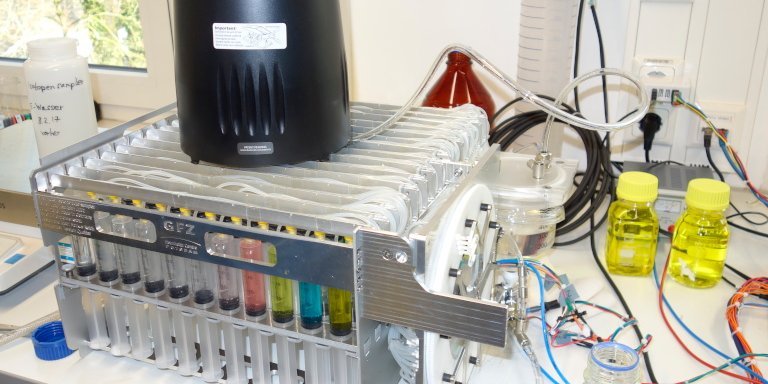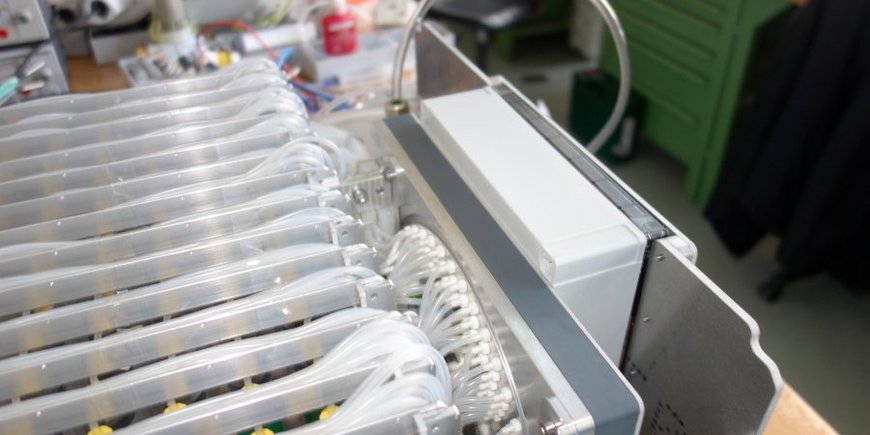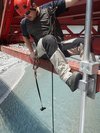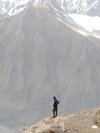An Automated High Resolution Water Sampler for Environmental Monitoring
The European Research Council (ERC) is supporting the team led by GFZ researcher Dirk Sachse with a 'proof of concept' grant. The funding of 150,000 Euro will serve to bring an automated rainwater sampler as close as possible to the market. For Dirk Sachse, it is the second ERC grant after his 'Consolidator Grant'. Together with Christoff Andermann, Torsten Queißer and Markus Reich, a prototype has been developed that has already passed extensive tests. "The idea came from Christoff, he then pushed ahead with the construction of the prototype with our engineers Torsten and Markus," reports Dirk Sachse, "Torsten took care of the electronic control and Markus provided the design and technical implementation".
The idea behind the device sounds simple at first: in order to continuously collect samples of rainwater even in rough regions, you set up an automated collector. But the devil is in the detail. How are the samples separated and conserved so that tiny differences in the isotopic composition can be analyzed months later? How does the energy supply work? And how robust does the 'sampler' have to be to survive half a year in the high mountains, for example in Nepal? The solution to all these questions has been on the roof of the International Atomic Energy Agency IAEA in Vienna for the past six months and before that on the measuring meadow of the Telegrafenberg in Potsdam. The device looks like a conventional plastic travel case, with handle and wheels, with a large funnel next to it. The inner life, however, is highly complex - and secret, as a patent is also pending.
But who but a handful of researchers should use such a rainwater sampler? Dirk Sachse and Christoff Andermann immediately come up with application examples: "After chemical accidents, the apparatus can be used for environmental monitoring," says Dirk Sachse. Samples could be taken at defined intervals - about every hour or even every few days. Or the continuous monitoring of drinking water sources can be automated or remotely controlled. Christoff Andermann adds: "The investigation of rain on radioactive substances is also possible." That's why they sent the sampler to Vienna for a test. Public authorities, companies, and other scientists: these are the target groups the GFZ team has in mind. In the next few months more samplers will be built to test them for the different applications. The 'proof of concept' grant comes at the right time. What particularly pleases the team around Dirk Sachse: In this round, only two of these ERC fundings went to Germany. Theirs is one of them.
Associates
- Basanta Adhikari (Tribhuvan University Kathmandu, Institute of Engineering)
- Atul Pandey (Patna University, Department of Geology)
- Indra Sekhar Sen (IIT Kanpur, Humboldt Fellow)
The Earth around us is changing. In order to predict future development and work towards a sustainable future we need to be able to monitor our environment continuously. This way we obtain data, that help us to understand the drivers of the change.
With funding from the European Research Council we at GFZ have developed a rain water sampler that can operate autonomously for months to take and store rain water samples in remote locations. In the #HelloMonsoon project we will now test this sampler under the harsh conditions of the Nepalese Himalayas to detect from the composition of the water the onset of monsoon. We will deploy the device at 6 locations in Nepal from 100m to 3600m altitude to take rain samples from pre-monsoon and summer monsoon season rainfall. We will sample rain from the wet and tropical Terai lowlands in the South, across the Himalayan Range, to the dry high-altitude Plateau in the North over summer 2022. Back in Potsdam, we will analyze those samples for their chemical composition.
Water (H2O) contains hydrogen and oxygen in different varieties, so called stable isotopes. Regular hydrogen has no neutron and regular oxygen 8 neutrons in their nucleus. A few atoms however are slightly heavier than their more abundant variety, with 1 and 10 neutrons each from hydrogen and oxygen. This makes them slightly heavier and water molecules with those atoms behave differently during their travel in the water cycle. By detecting the ratio of these isotopes along the path of the monsoon (S-N) and over time, we can assess changes in water sources as well as the effect of the large agricultural areas south of the Himalayas on the local water cycle.
Follow us on this journey when we deploy the samplers in May 2022 in Nepal, we will post updates on Twitter and linkedIn.



